Desire to Read & The Reading Recitation
First things first. If you are going to teach reading, you have to be a reading teacher. A teacher who does not like to read, or who has not acquired the habit of reading, will have difficulty being a reading teacher. Our first priority, then, is to be a reading teacher, to be a role model, a teacher who reads…
Desire to Read
The teacher must first of all kindle in the child a desire to read. The task is an easy one. It may be done by reading half of an interesting story, breaking off in the middle of it, and then asking the little ones, ” Wouldn’t you like to be able to read the remainder of it yourselves? (Source:Essentials of Reading)
The teacher may show the pupils a book with interesting pictures, and may suggest that those who can read can find out the story that the pictures illustrate. Children who can read and write can send letters to Santa Claus, and can read the replies. The ingenious teacher can find very many ways of creating the desire to learn to read. As a matter of fact, many, if not most, of our beginners come to school with the desire to learn to read already developed.
Division of a reading recitation
The time allotted to the recitation in reading should be carefully apportioned to the different operations of a reading recitation. These operations are four in number:
1st. — The recitation proper, consisting of hearing the pupils read, questioning them on the thought, and interpreting what needs interpretation.
2nd.— Drilling in articulation.
3rd.—The assignment of the new lesson.
4th.—Supplementary reading.
The time apportioned to each operation.
No universal division of time can be recommended. At one time a teacher may find it necessary to give more than usual attention to exercise in articulation.
At another time she may find it best to devote an unusually long time to questions on the thought, thereby shortening the time for drill in articulation.
Again, a teacher may find the lesson she expects to assign contains such a number of new words and strange ideas that she must take half of the recitation period to make the assignment.
It may be that the lesson to be assigned contains no new word or ideas. Then the amount of time necessary for this operation becomes zero.
Under average conditions a thirty minute reading recitation should be divided into about seventeen minutes for oral reading, questioning, and interpreting, three minutes for exercise in articulation, five minutes for the assignment of the new lesson, and five minutes for supplementary reading.
Very often this last time can be saved by having this reading done in the period of some other class, or in the opening exercises.
The assignment of the reading lesson.
It is economy of time to make a careful assignment of the new lesson. A minute at this operation may save misunderstandings that would require many minutes to detect and clear up. Four things must be considered in assigning a reading lesson:
First, the selection of the lesson;
second, the length of the lesson;
third, the development of the new words and ideas;
fourth, the exposition of the work to be done by the pupils in the process of preparation.
second, the length of the lesson;
third, the development of the new words and ideas;
fourth, the exposition of the work to be done by the pupils in the process of preparation.
The selection of a lesson.
The teacher should select the lesson before she comes to her class. She should bear in mind that the lesson should be of a nature suited: first, to the class; and, second, to the purpose of the teacher. It should be of such a nature as to be likely to interest the pupils. It should be of such difl&culty as will test their power, but not over-tax it.
The purpose of the teacher.
The teacher may see that her pupils lack facility in the reading of material in which there are no new words. She should select lessons of this nature until the pupils gain the desired facility.
Then her purpose may change. She may wish them to increase their vocabulary. The lesson selected will then contain many new words.
It may be that she finds the pupils unable to read verse well. She consequently assigns those lessons which are in verse. She may find her pupils much interested in some poem by Baker. It would be well for her to assign another lesson from the same author.
If she wishes to familiarize the class with types and effects, she must assign lessons suitable for that work. If she wishes to cultivate the power of gleaning thought by silent reading, she should select lessons of more than ordinary difl&culty, and should devote the recitation period to questions on the thought. Let her realize that order in the book is a consideration not to be compared with the reasons mentioned above.
The length of the lesson.
This also must be suited to the pupils, and to the purpose of the teacher. It may vary from a few lines in work in types or effects, to pages in gaining facility in recognizing old words. It must always be the subject of careful judgment.
The development of new words and ideas.
A certain lovable and scholarly professor of Greek in a large college held to the opinion that he could judge a student’s knowledge of a page of Thucydides by the way the student pronounced
the text. His classes could have given him much information as to the fallacy of his belief, had it been to their advantage to speak.
the text. His classes could have given him much information as to the fallacy of his belief, had it been to their advantage to speak.
A small boy may pronounce very glibly words and sentences whose meaning to him is not at all what it is to the teacher.
A schoolboy insisted that a dirty tramp ran out from under the bridge and caught Ichabod Crane by the ear. He cited as proof the exact words of Irving, “Just at this moment a plashy tramp caught the sensitive ear of Ichabod.”
Another original thinker spoke of Annie Laurie’s donkey, and when questioned as to his sources of information concerning the beast, triumphantly pointed to “Maxwelton’s braes are bonnie.”
The boy would doubtless have read the line with good expression, but with a mental picture somewhat different from that of the teacher.
The mistake would not have occurred had the teacher in assigning the
lesson spoken of the meaning of the word ” braes.”
lesson spoken of the meaning of the word ” braes.”
The dictionary will not do the work of the teacher.
Nevertheless the dictionary is very helpful. Each child above the fourth grade should be supplied with one, and should be trained to use it.
The dictionary, however, gives the mere skeleton of a meaning. The teacher must make the new idea live in the mind of the pupil. A certain common school dictionary defines lobster as “an edible marine crustacean.”
What an assistance to a ten-year-old boy! The teacher must see to it that the pupils have the ideas necessary to enable them to understand the new lesson.
If possible, she should show them a lobster.
If that is impossible, then a picture of a lobster, speaking of its color, appearance, and use.
It is not necessary to make a detailed study of the thing, inquiring into its anatomy, habits of life, methods of catching it, etc.
Such a study would be interesting, and possibly profitable, for nature study or for the purposes of composition work; but not much reading could be done if every object mentioned were studied in such a fashion. The important thing is that the child have a correct, though maybe not detailed, conception of the objects mentioned in the new lesson.
It is a good plan to review the new and difficult words at the opening of the recitation of the lesson.
An example.
In the lesson “The Lark and the Farmer“, the teacher will find it necessary to explain these words and probably others: Lark, field, neighbors, frightened, reapers, hurry, kinsfolk, harvest, notice, whet, scythes. It would be well to show the children a scythe, or a picture of a scythe, and to call up to their recollection some larks’ nest.
In “The Village Blacksmith” (Chapter Two), the teacher must see that the children have ideas of these words:
Spreading chestnut tree, sinewy, brawny, crisp, tan, bellows,
sledge, sexton, village, forge, smithy, threshing floor, choir,
anvil, repose.
sledge, sexton, village, forge, smithy, threshing floor, choir,
anvil, repose.
Many words do more than designate certain objects, attributes, or actions. These words not only express the ideas that they are expected to convey, but they also excite the feelings to greater or less degree. Each of the words: storm, ocean, tornado, mouse;causes in the mind of the hearer a slight degree of the same emotion that would be caused by the presence of the object itself.
If the hearer has seen the object, the effect is of course much greater than otherwise. The scenes in his experience rise again in his mind.
The emotional effect of the word is great in just the proportion in which the memory of his experience is vivid.
If the word indicates something not in one’s experience, it may still rouse the emotion through the imagination.
Such a word to most people is the word, “Arctic”.
The word sets up in the mind a mental image of the frozen North, and a feeling of fear and dread is aroused. One who does not have this feeling cannot appreciate Whittier’s lines:
The wolf beneath the Arctic moon,
Has listened to that startling rune.
Has listened to that startling rune.
Our work in reading fails of one great end if it does not help our pupils to understand and to appreciate literature. It therefore becomes the duty of the teacher to increase the emotional value of words to pupils.
In assigning a lesson the teacher should so use the child’s experience and imagination as to enable the poetic words and phrases to touch his emotions.
She should cause the pupil to tell the experiences that the word brings into his mind, when it was, where it was, etc.
Such an operation increases the facility of the action of the word on the feelings, the very end we desire to gain. This exercise should not be confined to the assignment of the lesson.
It should be part of the assigned work. It should continue until all such words and phrases as: misty light, sea, sea of dew, flaming forge, measured heat, dove, sting, Venice, touch the emotional nature of the child.
Assigned work.
The assignment of the lesson is of course incomplete unless specific directions are given to the pupils as to the work to be done in preparation for the next recitation.
One reason why we have not had the results in reading that we have had in other branches is that the assignment of work has not been so definite.
A pupil knows when he has prepared his arithmetic lesson, and he does not hope to conceal his failure when he has not prepared it.
The assignment in reading, “Take the next two pages, and study them carefully,” is likely to get the scanty consideration that it deserves.
The assignment should be in the form of detailed directions telling what to do, or questions to be answered either orally or in writing.
The questions may be about words, meanings, types, effects, or any other subject connected with the selection.
The directions may include the looking up of meanings, the making of lists of words; for instance, a list containing all the words in the lesson that recall agreeable experiences, a list of all the words that are hard to spell, or a list of all the words whose meaning is not clear to the pupil.
It is usually found best to put the assignment on the blackboard.
Model assignment for “The Lark and the Farmer.”
Where did the Lark build the nest?
How many young Larks were there?
In what danger were they?
What time of the year was this?
How did the Mother Lark feel as she flew away?
Why was not the old Lark frightened on the first two days?
What kind of a man was the farmer?
Make a list of words hard to spell.
Model assignment for “The Village Blacksmith.”
Read it through three times.
What is a smithy?
A bellows?
An anvil?
Did you ever see a flaming forge? When?
What tree does “spreading chestnut tree” make you think of?
What kind of a man was the blacksmith?
Copy the first stanza and mark the groups.
At least five minutes of each day should be spent in oral supplementary reading.
The children should also be supplied with an abundance of interesting easy reading for silent reading.
In most schools this work is limited by financial conditions.
The oral supplementary reading, however, requires but little expense. Two or three books, a current events paper, or the Sunday school papers are all that is absolutely necessary. But one book or paper of a kind is needed; indeed, it is better to have but one. The work is individual.
Procedure:
The pupil is given the book a day or two in advance. S/He is told what selection or part of a selection he is to read. He studies it over, probably at home, usually with some help from parents or teacher. He knows that all depend on him for the understanding of the selection. (interdependence)
He is put into the right mental attitude. (See Mental Attitude.)
When the time comes, he walks to the front of the room, faces the pupils and reads.
The use of the reading period alone limits this work to one or two pupils a day.
The ‘geography period can be used also in reading from such books as “Around the World,” Carpenter’s “Geographical Readers,” “The World and Its People,” the “Youth’s Companion Series of Geographical Readings.”
The same thing can be done in the history class.
This reading, instead of injuring the work in geography and history, actually strengthens it.
The opening exercises can include some reading, possibly in the nature of current events or nature study.
The pupils of a room can be divided into groups for the purpose of giving greater opportunity for individual oral reading.
Two or three times a week twenty or thirty minutes can be taken.
At the signal the pupils gather in groups in the assigned parts of the room.
Let us describe such an exercise:
Group A, in the northeast corner of the room, are seated on the recitation seat and two of the front seats. There are ten pupils in this group.
To-day five of them will read about five minutes each from Gould’s “Mother Nature’s Children.”
In the northwest comer by the organ are gathered eight children. They are reading “Five Little Peppers.”
They are interested. The hum of the other groups disturbs them not at all.
The teacher passing from one group to another as she sees fit, does not find it necessary to withdraw any child from this group on account of misbehavior.
That group just back of the center of the room, the pupils sitting two in a seat, is reading Coffin’s “Drumbeat of the Nation,” while that group in the extreme rear of the room is reading “Viking Tales.”
By such a plan, each pupil receives four times as much practice in oral reading as he otherwise would receive.
**Just a caution or two…
1. The books or selections must be interesting and easy.
2. The periods must be frequent enough to maintain interest.
3. The teacher must watch order carefully, persistently, and unobtrusively.
An alternating program can be used with advantage.
Let one day of the week be set apart for the regular reading exercises, using the standard material of the grade.
One day can be used for sight reading, the study time to be spent in composition, or drawing, or both, as suggested in the chapter on the Classification of Material.
One day can be used for the study of difficult material, with class discussion of the contents and meaning, and with the oral reading of such passages as may seem best.
One day can be used for individual reading, when two or more pupils read lessons which they alone have studied, or when they recite memorized selections or tell stories.
One day can be used for the study of longer selections of minor value, to be given in substance only.
This program affords variety and brings to the pupils in turn each motive that can be used to increase the interest or stimulate the effort in reading, both silent and oral.

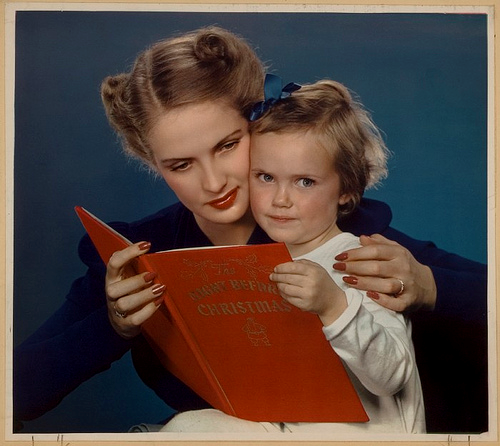
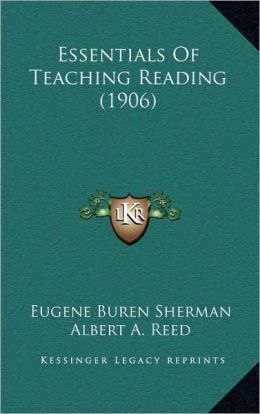
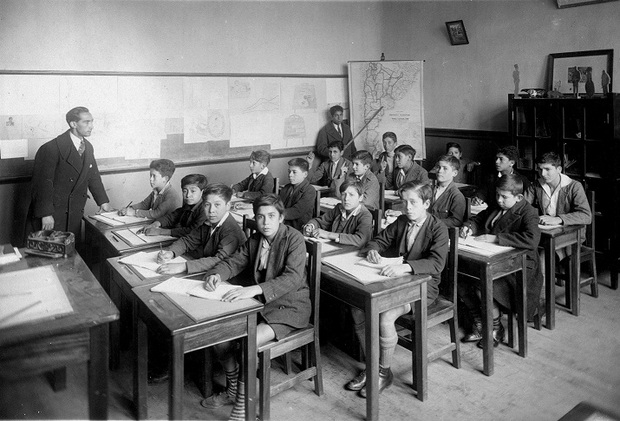


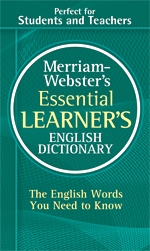
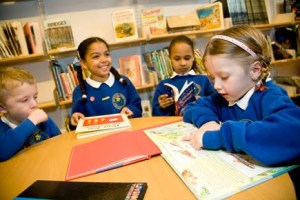
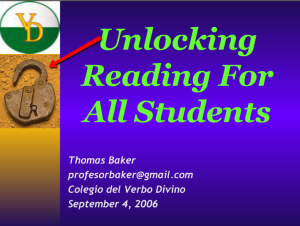
No hay comentarios:
Publicar un comentario